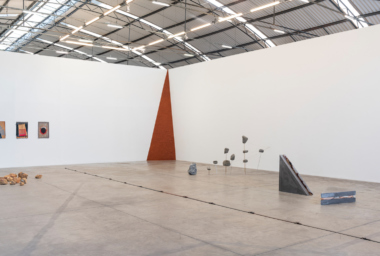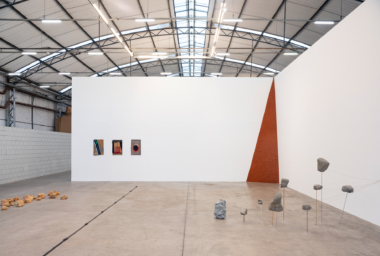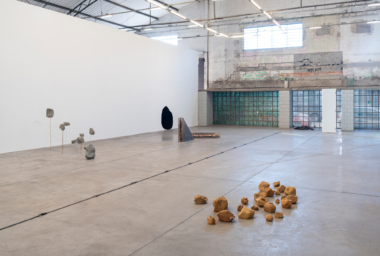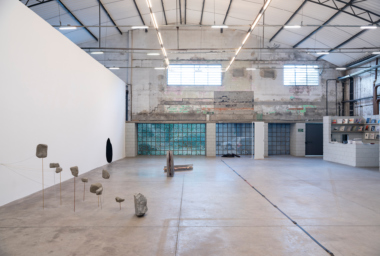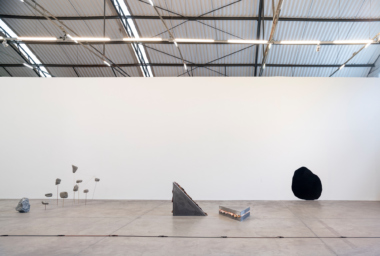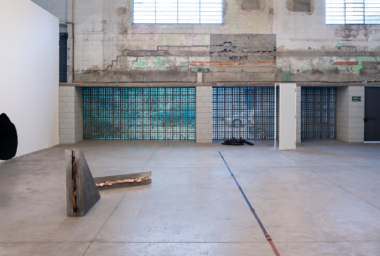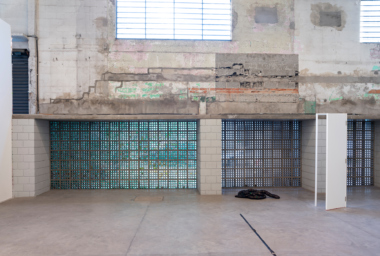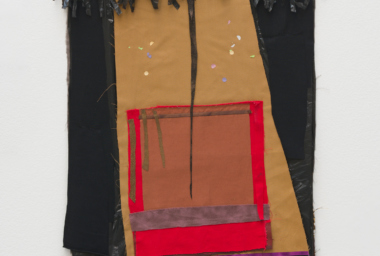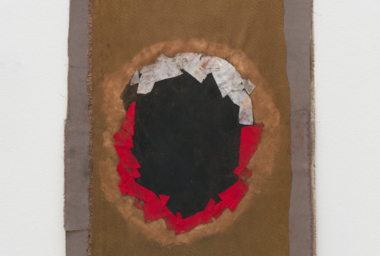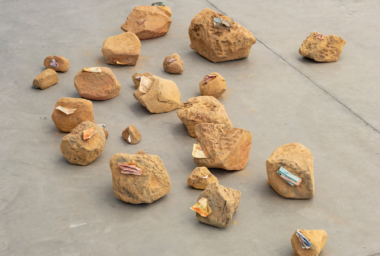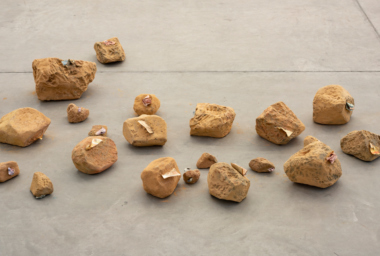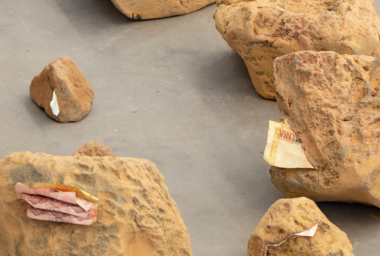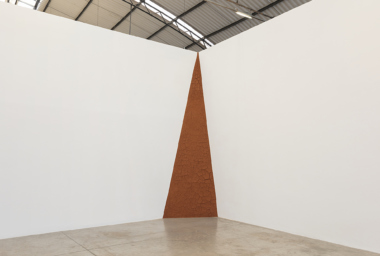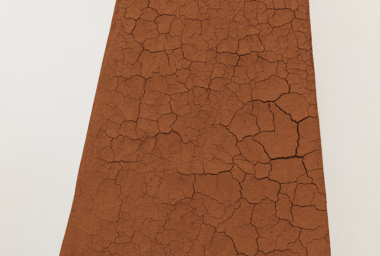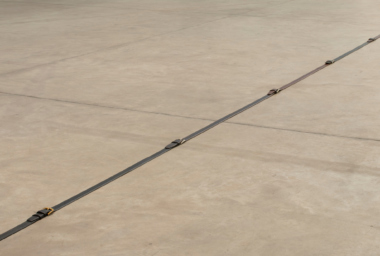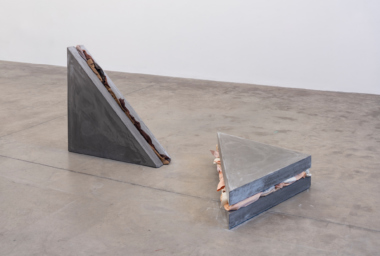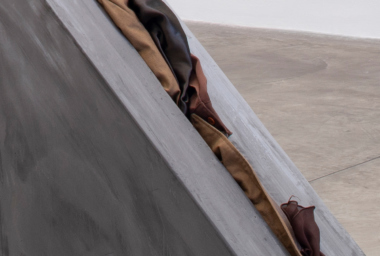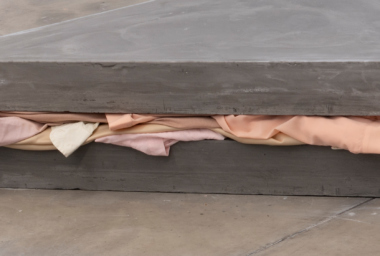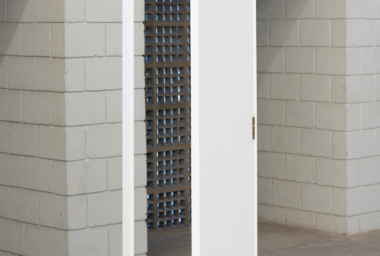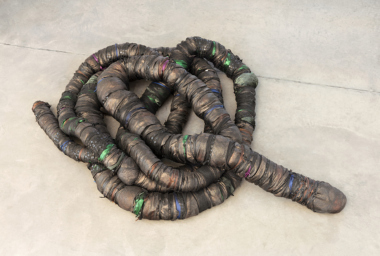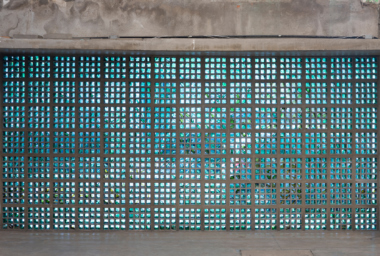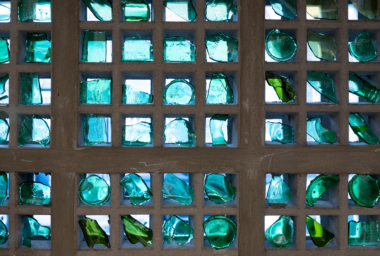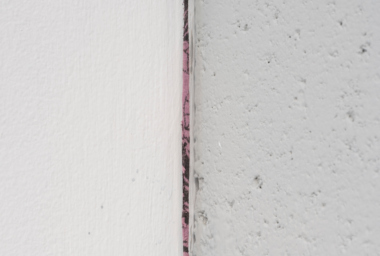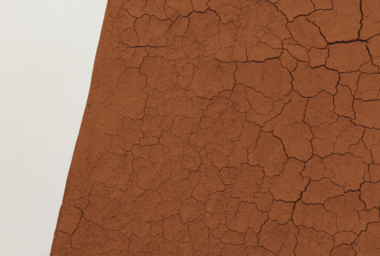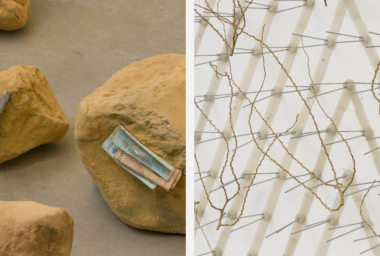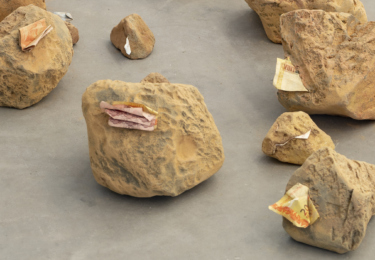
Sara Ramo
Cards on the Table
Apr 12 – May 19, 2018
Opening
Apr 12, 10 am–1 pm
Galpão
Rua James Holland 71
São Paulo
Directions
Download
Sara Ramo’s new exhibition at Fortes D’Aloia & Gabriel | Galpão, Cartas na mesa [Cards on the Table], presents sculptures, collages and interventions which, inspired by the Theatre of the Absurd, evoke (with critical eye) the structures that have conducted and still conduct Brazil’s and the World’s current social and political tensions.
The work that lends its title to the show is a series of ten collages made with fabric, pigment, and sewing that are strongly related to celebratory banners. Three of these pieces are part of the exhibition, such as lost cards drawn from a guessing game. When combined, the titles of each collage constitute a kind of poem or carnival march.
CARDS ON THE TABLE
1. To everyone’s faith, my mirror
2. To this land’s daughters and sons
3. Not such placid riverbanks
4. There are untold stories
5. The emperor has no clothes
6. Silver spoons
7. Profit is not all there is
8. Celebrating matters
9. Joy moves us
10. Save the delusional dream!
The issues presented by this political-poetic deck of cards pervades the exhibition’s atmosphere. In Contrato social [Social Contract], the artist balances fake gems on various types of metal rods while a real gem lies near the set, dropped on the floor. Detrito-origem [Detritus-Inception], are alegoric gems made of clay, soil, cement and encrusted money bills. The artist creates a geology of desire through a consumption bias here: the way money is ontologically structured in our experiences and relationships.
This interest in creating earthy and stagecrafted trails is reflected in the pieces Evidência e Buraco negro [Evidence and Black Hole]. Whether in the former the artist brings about the verticalization of the ground – a soil made triangle shifted on the wall –, in the latter the action is reversed: Sara opens a cavernous hole in the wall, arousing curiosity and repulsion.
In an essay specially created for the exhibition, Bianca Dias states: “The allegorical dimension appears not as veiling, but as a way of approaching reality, as fiction which engenders what is horrible and abject in culture. Like ethics that bypass (through jokes and irony) this impossible place which doesn’t stop inscribing itself and which happens as a place of joy as well as a cause of desire.”
Sara Ramo, 1975, of Brazilian-hispanic origin, currently lives and works in São Paulo. Her most recent solo exhibitions include: Para Marcela e as outras, Capela do Morumbi (São Paulo, 2017); Punto Ciego, EAC – Espacio de Arte Contemporáneo (Montevideo, 2014); Desvelo y Traza, Matadero (Madrid, 2014) and Center d’Art la Panera (Lleida, 2014); Penumbra, Fundação Eva Klabin (Rio de Janeiro, 2012). The artist has taken part in the followings Biennials: Mercosur (Porto Alegre, 2013 and 2007), Sharjah (United Arab Emirates, 2013), São Paulo (2010), Venice (2009), among others. Her work is featured in important collections such as Fundación Botin (Santander, Spain), Fondazione Cassa di Risparmio di Modena (Italy), MAM (Rio de Janeiro), Pinacoteca (São Paulo), Inhotim (Brumadinho), among others.
______
Not such placid riverbanks
Text by Bianca Dias*, published on the occasion of the show Cartas na mesa by Sara Ramo
In Civilization and Its Discontents, Freud sets the foundation point of the birth of society and also points to an end of the world, in the sense that this mythical structural birth – which would invoke a narrative that condenses the basic laws of men’s subjectivation in relation to social – would be inevitably marked by discontent and rupture.
Sara Ramo’s work follows this path: it’s a cosmogony, an emergency of the world and also a disappearance, scatology, the end of a cycle. The intimate dimension is resumed from politics in the way the objects are articulated, as in the bundled belts dropped on the floor. From the closest object to the body, a social body is made and a sharp criticism to the logic of power and violence that structures social relations is built.
What shines through is a condition of enjoyment – in a psychoanalytic sense, a bundle of suffering and pleasure – which, in the guts of the social fabric, supports human exchanges. A “surplus-jouissance” (surplus-enjoyment) as psychoanalyst Jacques Lacan points out and as Sarah Ramo shows with her money bills encrusted in stones: remains and inception, nature and culture, organic and inorganic, a pulsation that pervades everything, that passes through subjectivity magnetizing objects and lives, relations, conflicts and desires. Money is matter, flesh, body, sexuality, survival of a residue assimilated by culture.
There is also a geological dimension present, which can be seen in Evidence: a vertically made floor, a strange entity made of soil in the shape of a scalene triangle (in which all sides are uneven), as well as its inner angles.
It’s impossible not to evoke George Bataille and his notion of expenditure: in every gesture from the artist there is a strangeness verging on the hallucination of excess, of sacrifice, of profanity and sacredness. Nothing is there by chance or as a merely aestheticizing practice. Sara uses the most ordinary materials – used clothes, soil, fabric, paper bills, polystyrene, colored tapes for collages, various papers. There is a complex economy that doesn’t sort itself out, keeping the world open – as in Bataille, who addresses expenditure as an attempt of representing the world, distancing himself from the explicitness of isolated economy, which focuses its analysis strictly on the concrete relation between output, profit and accumulation.
The result is a meditation on the world’s representation mode regarding the issue of energy allocation which moves around the surfaces of the bodies and of the things that are, still according to Bataille, the wasteful expenditure, something that encompasses consumption, eroticism, the thin line between nature and culture – elements which were already there, for example, in the video Hotel Paradise from 2014. Sara resumes some questions initiated there: the blurred line that connects reality and delirium which is language itself, nature’s wilderness and the violence of culture, the dimension of residue and object – fascination and repulsion.
In this overturn of soil, blood and residue where culture stands, the artist summons the celebration in collages in which she reaffirms fury and faith – Celebrating Matters; Joy Moves Us; Save the Delusional Dream! – and to approach reality, she builds a set which conjugates the issue of enjoyment: a spiral of pain and pleasure.
There is, however, a poetic, almost redeeming tension in a sublimatory practice which is an attempt to reorganize something around the emptiness left by the remains. It’s an end being written, but the end of a cycle and of logic of power and violence. For this purpose, Sara Ramo flirts with the void and with the idea of Thing, primarily approached by Freud and resumed by Lacan. The Thing is what resists any attempt of signification or representation, it’s the void. The Thing is, in its essence, irreducible to an image or to a signifier. The Thing evokes absence. Sara Ramo watches out for this mystery. The artist seems to know that the Thing is the inexistence of the object itself, so to speak. It is the absence which keeps the desire alive.
What seems to be at stake for the artist is the idea that, in artistic creation, the subject doesn’t avoid the emptiness of the Thing. While capitalism and its derivations fill this void with the authoritarianism of its discourses, art captures the object as far as it doesn’t reject the elusiveness also enclosed there. Art puts the void at the center of creation and this is what the artist works with. Its journey through “the end of the world”, through the inception and through the remains, is a way of bypassing but also approaching reality.
Sara Ramo makes a signifying bricolage, giving new meaning to existing objects. She finds an object and overhauls its utilitarianism: she turns it into something beyond the usefulness logistics to which it was destined. This way, she overturns the images from the inside, finding what Lacan called “art seeds”, a hole where the unconscious will always be created. Something stands out in the black hole Sara Ramo presents: the perpetrated distortion is an index of reality, of what can not be represented.
The allegorical dimension appears not as veiling, but as a way of approaching reality, as fiction which engenders what is horrible and abject in culture. Like ethics that bypass (through jokes and irony) this impossible place which doesn’t stop inscribing itself and which happens as a place of joy as well as a cause of desire.
In this allegorical distortion that disseminates significance gameplays and still points out the dimension from where meaning escapes, we find Social Contract: a set of fake gems suspended by sticks of gold, silver and bronze alongside a real heavy impenetrable stone, which is placed out of the structural field even if it belongs to the set, highlighting a neighborly relationship between the elements that arises from the void, from silence.
Her work denounces that the ideal dimension helps to resurface residue. The use of scenography, of ridiculousness and witticism is at the junction of a deep social wound. It is necessary to know how to make the possibility of a new inception with the residue, extracting it from the ruins. Using destruction as an announcement for the new, like the collages that are set up in a kind of delirious celebration of remains. Politics also takes place as the remains that come across expenditure as something unavoidable which affects a whole symbolic field that approaches art, psychoanalysis, anthropology and economy.
Maybe what’s left of this complex subtraction that Sara Ramo’s work produces is the gift, the possibility of excessive human redemption. If celebration matters here, it’s exactly in the hopes of bypassing, of finding reality in its impossibility. It is about doubt and gift: deprivation of certainties to maintain the ultimate sharpness of art – the moveable place in which the object is not related to significance anymore and breaks out of reality, because it is the embodiment of reality itself.
It’s with this subtle and volcanic action that Sarah maintains her place as an artist, as a collector of residue, as presented by Walter Benjamin: the artist is the one who gathers what society discards to return to the world a transformation that happens from there, with an extremely poetic gesture, from a heroic criticism that collects and compiles the annals of disorder to be reborn in a transgression thunderbolt.
* Bianca Dias is a psychoanalyst, an art critic, an essayist, and the author of Névoa e Assobio (Mist and Whistle)
